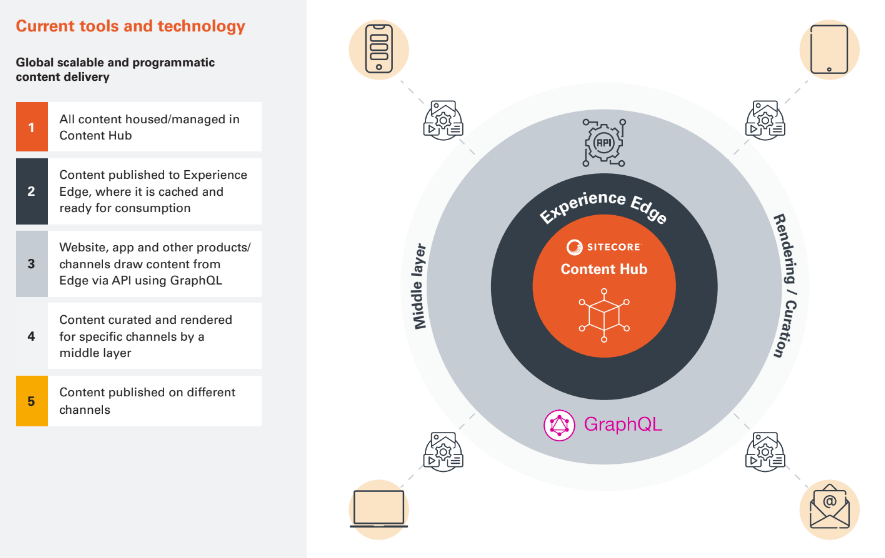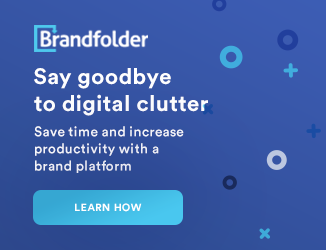The COVID-19 pandemic considerably shifted consumer behaviour, with digital platforms and self-service options increasing in popularity. The pandemic also shifted how many of us plan and book holidays. According to SiteMinder’s global ‘Changing Traveller Report 2025’, 36% of travellers begin their travel research using a search engine (an increase of 10% from 2024), with 42% choosing an online travel agency. These figures highlight that travellers are now more comfortable planning and booking trips online, relying less on in-person contact.
Today's travel brands need adaptable content strategies that deliver consistent, personalised experiences across every digital channel to keep pace. This blog explores how adopting an omnichannel content management architecture helps travel brands meet the demand for more consistent, dynamic engagement by centralising operations, streamlining content delivery, and elevating the experience at every digital touchpoint.
Headless Omnichannel Content Platforms: A Primer for Consistent Content Experiences
An omnichannel content platform (OCP) enables organisations to centralise content creation, management, approvals, and localisation and enable dynamic content delivery for flexibility and personalisation at scale. Traditional platforms like Digital Asset Management (DAM), Web Content Management (WCM) and Enterprise Content Management (ECM) are insufficient for omnichannel content.
Unlike traditional CMS platforms that tightly bind content authoring within the delivery of a single website channel, headless architecture separates content authoring and media from the presentation layer,. This separation allows brands to manage content, metadata, relationships, personalisation attributes, topics, and delivery channels in one central system and, based on rules, display that content to suit the individual's preferences and language.
For organisations in the travel industry, content can be curated, localised, and personalised centrally, then dynamically distributed across relevant platforms. This centralised approach supports an effective omnichannel strategy by:
- Removing manual editing in each channel and ensuring consistent messaging and vital information across all customer touchpoints.
- Enabling integration with key systems, including CRMs, WebCMS and App platforms, project management tools, and marketing automation platforms such as CDP and email/messaging.
- Supporting composable technology strategies, allowing connection with digital asset management systems and advanced integration tools.

Personalisation at Scale: Customised Content Across Multiple Channels
A headless omnichannel content platform allows travel brands to deliver personalised, relevant content across every digital touchpoint, including websites, mobile apps, social media, loyalty apps, in-flight systems, and emerging IoT channels.
Content, personalisation attributes, customer data, and contextual tags are centrally managed and distributed via APIs. Unlike traditional CMS platforms, headless architecture integrates easily with AI-driven recommendation engines, CRMs, and marketing automation tools, ensuring that legacy constraints and manual processes do not limit personalisation strategies. Modularised content takes this a step further and makes it even easier for content teams to reuse, remix and deliver the duplicate content to a specific group of customers based on their preferences.
The result is a truly omnichannel experience, with tailored messaging consistent across all platforms and channels. The ability to apply real-time personalisation based on traveller behaviour, languages, preferences, and booking history fosters deeper customer satisfaction and long-term loyalty.

Streamlined Content Delivery: Integrating Web, Mobile, and Emerging Channels
Content consumption in the travel industry is no longer confined to desktop websites. Mobile bookings, social media campaigns, wearable devices, and even virtual reality are becoming standard touchpoints for digital travellers. For content teams, manually duplicating and editing content to suit these channels is time-consuming, wasteful, and unnecessary when the right platforms are backing up their content operations.
Headless omnichannel content platforms offer unparalleled flexibility in managing omnichannel content distribution using API-based content delivery. This centralised model enables travel brands to easily deliver customised content to customer-facing channels.
Content automation workflows can also be established, enabling updates across all channels from a single backend source. Automated workflows reduce manual effort, eliminate content silos, and ensure consistent, brand-aligned messaging wherever travellers interact with your business...

Case Study: Headless Content Delivery in Practice
An airline in the APAC region faced growing challenges with managing content across its mobile app and 16 international Points of Sale, each with unique local regulations, languages, and operational requirements. Managing separate content for each market had become inefficient and difficult to scale.
The Creative Folks team implemented a headless omnichannel content solution using Sitecore Content Hub and delivered it through Experience Edge. This approach allowed the airline to decouple content from app code and modularise it into centrally managed snippets, including flight delays, FAQs, and destination guides.
The airline could now personalise content dynamically by Point of Sale, location, ticket type, and language preference. For example, an English-speaking traveller in Tokyo would receive timely airport information in English, tailored to their location and itinerary. This localisation was achieved without creating and maintaining multiple versions of the same page.
The solution also introduced structured workflows for legal and multilingual content, improving compliance, speed, and team autonomy. Content updates could be made centrally and deployed instantly across all channels. The result was a content delivery model that significantly reduced operational overhead while ensuring consistent, relevant customer experiences across every digital touchpoint.
The solution’s key benefits included:
- Tailored Workflows: Structured workflows for specific content types, such as legal disclaimers and FAQS, support version control, compliance tracking, and faster approval cycles.
- Multilingual and Localised Delivery: One content variant can serve multiple Points of Sale, with content dynamically tailored to location, language, and booking data.
- Significant Time Savings: Content updates that once took days or weeks are now completed in hours. Teams can make updates centrally and instantly publish across web, mobile, and app platforms.
- Decoupled Development Cycles: Content changes no longer depend on development sprints or app releases. Content teams can manage updates independently from web development teams.
- Content Reuse and Consistency: A modular content structure allows for reusing assets (like FAQs or destination guides) across touchpoints while ensuring a consistent brand experience.
Conclusion
Headless omnichannel content platforms provide a future-proof foundation across Australia's travel industry, creating a more straightforward and more personalised experience across multiple channels. By decoupling content creation and management from the presentation layer, the travel industry can centrally manage content and distribute it dynamically across web, mobile, in-flight systems, social platforms, and IoT devices, ensuring consistency and personalisation at every touchpoint.
This approach also supports integration with booking platforms, payment gateways, CRM systems, DAM tools, and AI-driven personalisation engines. The flexibility of headless architecture ensures that travel organisations can continuously evolve, scale their operations, and integrate emerging technologies without being constrained by legacy monolithic systems.
By prioritising omnichannel content delivery, automating workflows, and delivering personalised experiences at scale, headless omnichannel content platforms play a key role in enhancing traveller engagement, building long-term loyalty, and driving sustainable business growth.
Creative Folks Can Help to Map Your Journey to Success
With over two decades of experience, we’ve helped organisations, including one of Australia’s leading airlines. The Australian Ballet and the University of Western Australia rethink how they create, manage, and scale their content. Our team understands that success doesn’t come from cookie-cutter solutions but from platforms purpose-built for your unique needs.
We are collaborative in designing and implementing headless omnichannel content platforms that reduce manual workloads and future-proof your content operations. Whether you're just beginning your omnichannel journey or looking to optimise an existing ecosystem, we’ll work with you to simplify the complex. Visit our Headless Content Delivery page to learn more about our approach.




 Previous
Previous


